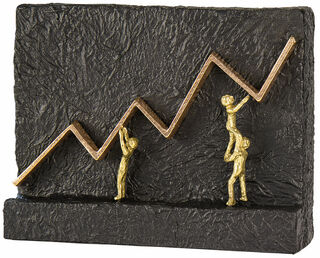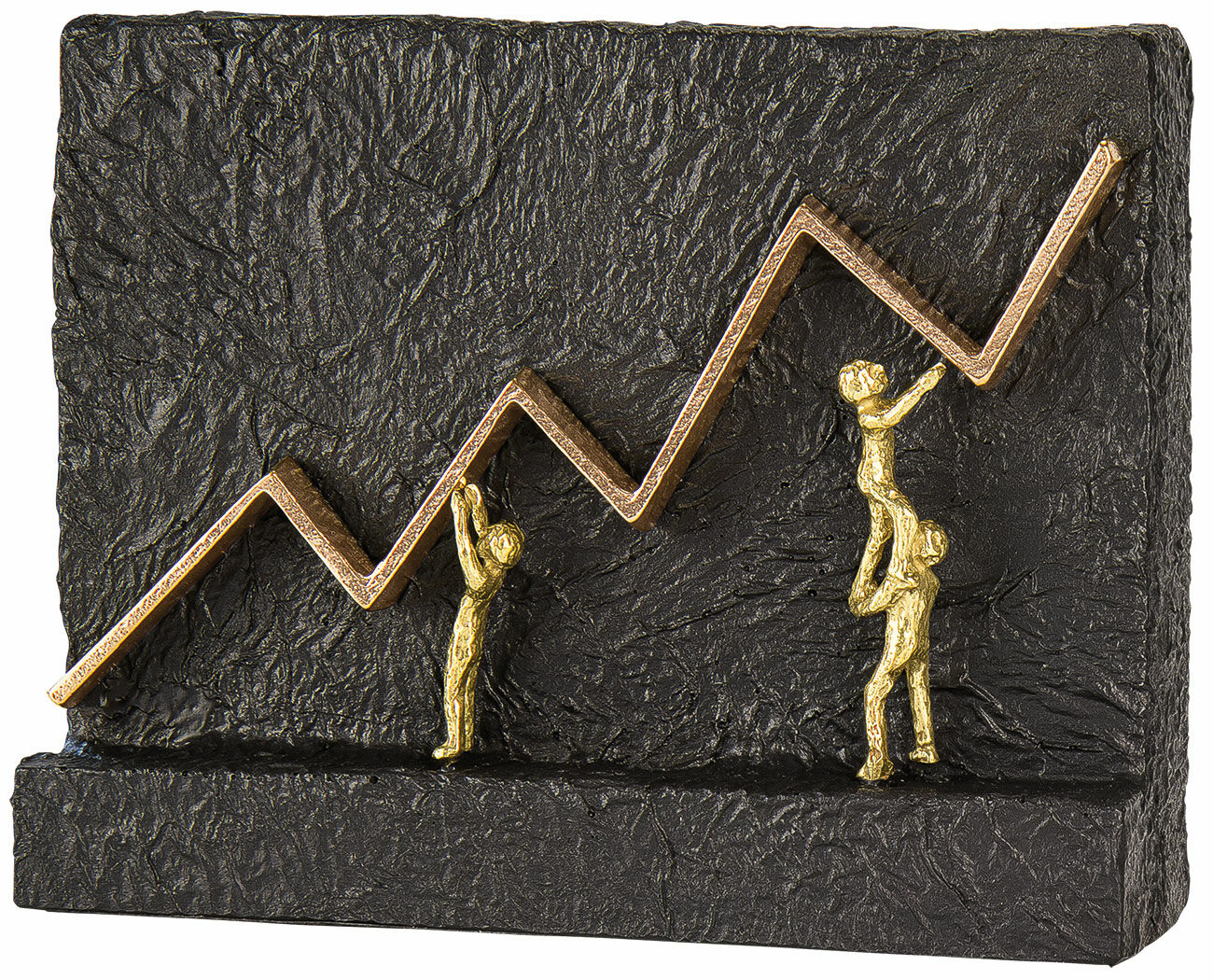Sculpture "Joining Forces for Success", bronze with cast stone
Sculpture "Joining Forces for Success", bronze with cast stone
Quick info
bronze + cast stone | polished | size 19.5 x 15 x 6 cm (h/w/d) | weight approx. 2.7 kg
Detailed description
Sculpture "Joining Forces for Success", bronze with cast stone
Kerstin Stark wants to convey messages of everyday life with her sculptures. They are symbolically simple and familiar to everyone - and offer plenty of room for personal interpretation. The goldsmith contrasts precious materials in an accomplished manner.
Table sculpture made of finely polished bronze on a cast stone base. Size 19.5 x 15 x 6 cm (h/w/d). Weight approx. 2.7 kg.
Customer reviews
danke es gibt nichts zu meckern
Sehr schöne Skulptur. Schnelle Lieferung und sehr freundliches Personal bei Rückfragen
Wunderschöne Kunst, ist schon das 2 Kunstwerk der Künstlerin in unserem Besitz.
About Kerstin Stark
1971-2017
Messages of everyday life that are lovingly put in a nutshell. The trained goldsmith Kerstin Stark used targeted contrasts to give her table sculptures a special expressiveness.
Her figurines, sculptures and jewellery objects are ideal gifts for special occasions. They are bearers of tender messages, stimulus and motivation for special life situations.
An alloy of copper with other metals (especially with tin) used since ancient times.
When casting bronze, the artist usually applies the lost-wax technique which is dating back more than 5000 years. It's the best, but also the most complex method of producing sculptures.
First, the artist forms a model of his sculpture. It is embedded in a liquid silicone rubber mass. Once the material has solidified, the model is cut out. The liquid wax is poured into the negative mould. After cooling down, the wax cast is removed from the mould, provided with sprues and dipped into ceramic mass. The ceramic mass is hardened in a kiln, whereby the wax flows out (lost mould).
Now we finally have the negative form, into which the 1400° C hot molten bronze is poured. After the bronze had cooled down, the ceramic shell is broken off and the sculpture is revealed.
Now the sprues are removed, the surfaces are polished, patinated and numbered by the artist himself or, to his specifications, by a specialist. Thus, each casting becomes an original work.
For lower-quality bronze castings, the sand casting method is often used which, however, does not achieve the results of a more complex lost-wax technique in terms of surface characteristics and quality.
A plastic work of sculptural art made of wood, stone, ivory, bronze or other metals.
While sculptures from wood, ivory or stone are made directly from the block of material, in bronze casting a working model is prepared at first. Usually, it is made of clay or other easily mouldable materials.
The prime time of sculpture after the Greek and Roman antiquity was the Renaissance. Impressionism gave a new impulse to the sculptural arts. Contemporary artists such as Jorg Immendorf, Andora, and Markus Lupertz also enriched sculptures with outstanding works.


